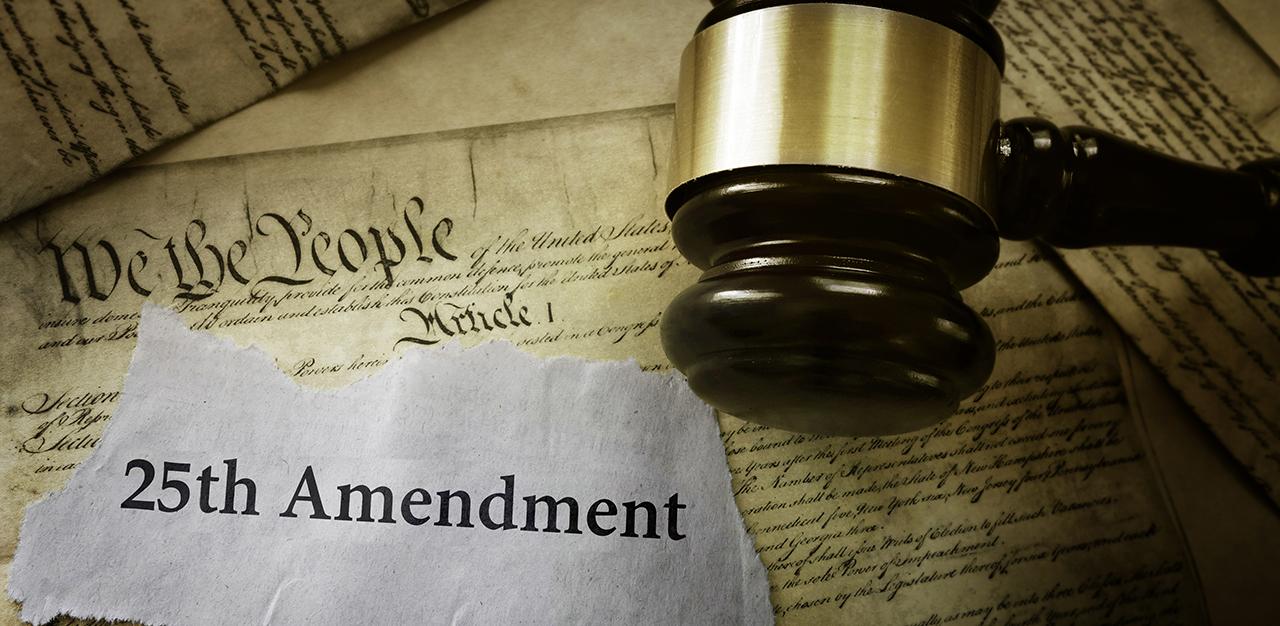
The Twenty-Fifth Amendment was approved by Congress on April 13, 1965, and ratified on February 10, 1967. Often referred to as the “Succession Act,” the Amendment was drafted to resolve outstanding issues related to vacancies, both permanent and temporary, in the Office of the President. The concerns involved not only the death, removal, or resignation of a President but also when a President becomes incapacitated or disabled, even for a short period of time, to the extent he or she cannot fulfill the responsibilities of the Office.
Although it has been well established that the Vice President becomes President upon the death of the President, it was the assassination of President John F. Kennedy on November 22, 1963, and significant confusion as to whether Vice President Lyndon B. Johnson had also been injured on that fateful day that the need for the nation to have a clear succession plan was identified.
To cover multiple scenarios from death to disability to incapacity to do the job, the course of action that America would follow is set forth in the text of the Twenty-Fifth Amendment. In its entirety, the Amendment states,
Section 1
In case of the removal of the President from office or of his death or resignation, the Vice President shall become President.
Section 2
Whenever there is a vacancy in the office of the Vice President, the President shall nominate a Vice President who shall take office upon confirmation by a majority vote of both Houses of Congress.
Section 3
Whenever the President transmits to the President pro tempore of the Senate and the Speaker of the House of Representatives his written declaration that he is unable to discharge the powers and duties of his office, and until he transmits to them a written declaration to the contrary, such powers and duties shall be discharged by the Vice President as Acting President.
Section 4
Whenever the Vice President and a majority of either the principal officers of the executive departments or of such other body as Congress may by law provide, transmit to the President pro tempore of the Senate and the Speaker of the House of Representatives their written declaration that the President is unable to discharge the powers and duties of his office, the Vice President shall immediately assume the powers and duties of the office as Acting President.
Thereafter, when the President transmits to the President pro tempore of the Senate and the Speaker of the House of Representatives his written declaration that no inability exists, he shall resume the powers and duties of his office unless the Vice President and a majority of either the principal officers of the executive department or of such other body as Congress may by law provide, transmit within four days to the President pro tempore of the Senate and the Speaker of the House of Representatives their written declaration that the President is unable to discharge the powers and duties of his office. Thereupon Congress shall decide the issue, assembling within forty-eight hours for that purpose if not in session. If the Congress, within twenty-one days after receipt of the latter written declaration, or, if Congress is not in session, within twenty-one days after Congress is required to assemble, determines by two-thirds vote of both Houses that the President is unable to discharge the powers and duties of his office, the Vice President shall continue to discharge the same as Acting President; otherwise, the President shall resume the powers and duties of his office.
Sections one through three of the Twenty-Fifth Amendment have all been invoked over time.
For example, eight Presidents have died while in office, leading to their Vice President assuming the presidency. Another example of the invocation of one of the first three sections of the Amendment occurred during the Nixon administration. In 1973, Vice President Spiro Agnew resigned, and President Richard M. Nixon appointed Gerald R. Ford to succeed him. One year later, on August 9, 1974, President Nixon resigned, and Vice President Ford became President. As President, Ford would invoke the Amendment by appointing Nelson A. Rockefeller as Vice President.
Additionally, invocation of the Amendment has taken place for brief and temporary transfers of presidential powers to the Vice President. In July 1985, President Ronald Reagan used the Amendment to transfer power to Vice President George H.W. Bush for the duration of a surgical procedure he underwent. And on two separate occasions, President George W. Bush transferred temporary powers of the presidency to Vice President Dick Cheney. Both of the “Bush to Cheney” brief transfers of powers took place due to the President undergoing elective surgery.
Section 4 of the Amendment is the most controversial as it allows for the removal of a President upon a determination that he or she is unfit to carry out the responsibilities due to incapacity caused by illness, including mental illness or injury. To date, this section of the Amendment has never been invoked. However, in 1981, after President Reagan was shot and while he was in surgery, documents invoking this section were prepared, but not executed as President Reagan’s surgery and recovery from the assassination attempt were successful.






